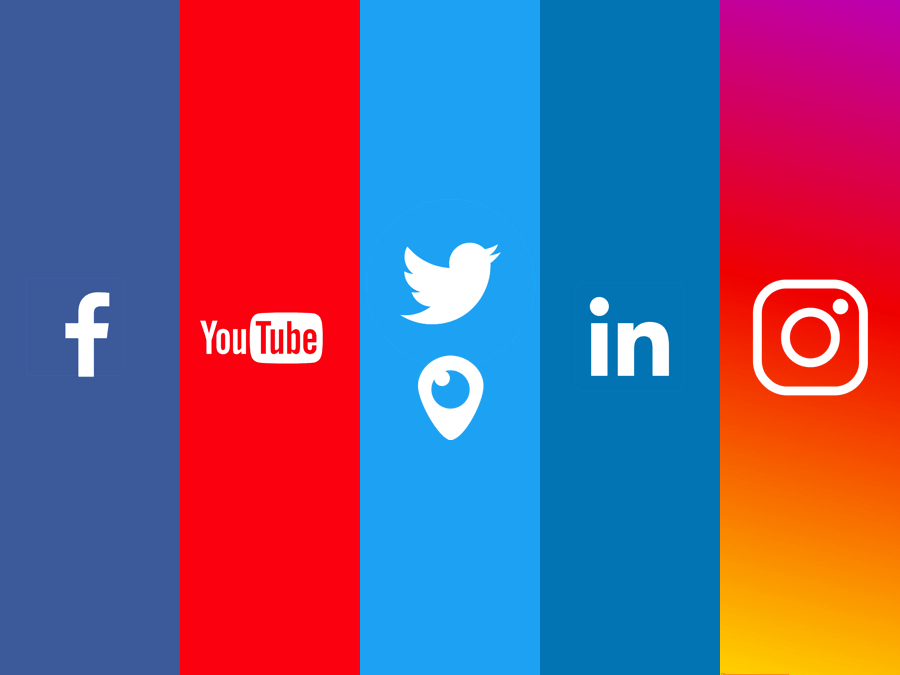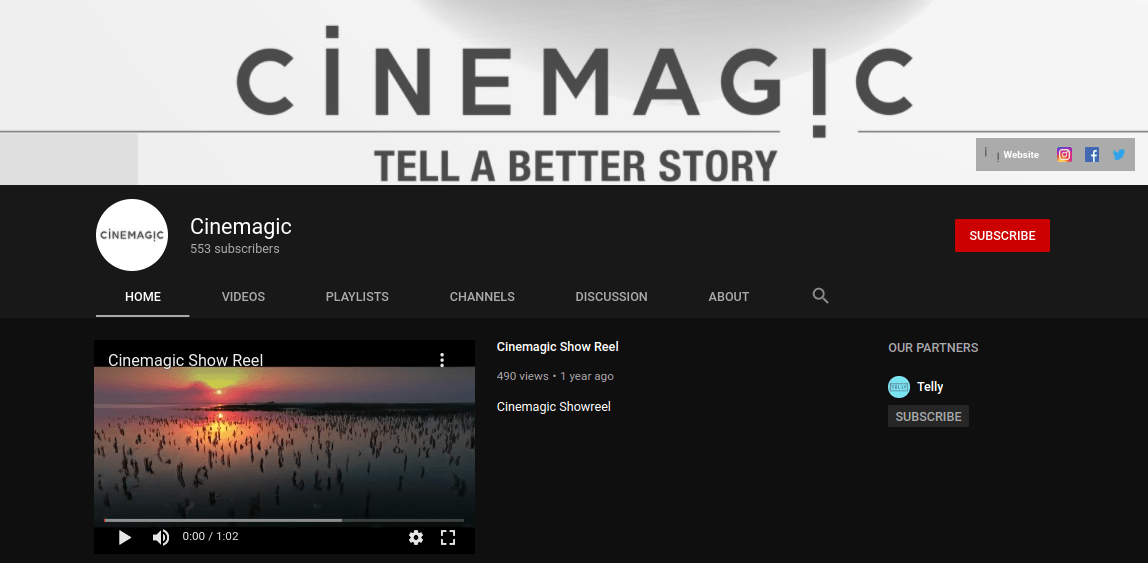Social media has consolidated its position as an essential platform for advertisers to connect with their clients. According to the Interactive Advertising Bureau, domestic advertising revenue in social media increased impressively 55 per cent last year alone, from $7 billion to $10.9 billion. This figure will rise to $15 billion in 2017 eMarketer predicts.
The reason behind that bonanza? These platforms concentrate a broad and diverse audience, which is spending more and more time wired in. ComScore estimates that almost 20 per cent of total online time spent across both desktop and mobile devices in the US is on social platforms. A recent Pew Research survey shows that 62 per cent of adults in the US receive their news on social media.

You want to advertise clearly where the audience is. And if all eyes are on those sites, the ad sales opportunity is ripe for picking.
A variety of promotional options are available on social media platforms such as Facebook, Twitter, Snapchat, Pinterest, YouTube and LinkedIn. Of course, the following question is: Which network should you use? There’s never a cut and dry response.
Several factors play in determining how social media can be leveraged in your ad campaign. We have broken them down below to help you decide which ones are best suited to your needs, so you can start.

At a personal basis, you’re no longer familiar with Twitter. But it’s the big kahuna of social media advertising, from a business point of view. Facebook generated more than $6 million in advertising revenue in the last quarter alone, and that number is expected to continue to rise. So what good is it for you as an advertiser on Facebook? Let’s downplay it.
Users
Demographics
Facebook is the leading social media site across every demographic.
- The most common age groups are 25–34 (24 per cent) and 18–24 (23 per cent).
- 54 per cent of Facebook users are female.
Tips for Facebook advertising
- Make sure you are visible.
- Showcase a strong value proposition.
- Adapt the material to the needs of the target market. Facebook has a pertinence rate that determines how the ad is viewed as favourably.
- To encourage people to click on your link, include a clear call to action.
Costs of Facebook advertising
- For most ads, the minimum amount you can spend per-day ranges between $1 to $5.
Pros of Facebook advertising
- Understandable dominance over all demographics
- World scope (a big, potentially viral network)
- Comprehensive structure to aid advertising brands
Cons of Facebook advertising
- Heavy competition
- Hard to catch people’s attention
- Low conversion and click-through
X
X is known for its iconic posts in 140 characters. It takes too much of the straightforward but measured approach to ads. That is the called purpose social media site, where you can meet users who may be interested in discussions about your brand or product categories.
Facebook has a few promotional forms, including Promoted Tweets, Promoted Accounts and Promoted Trends. Like other blogs, the content advertised by X is stated as being sponsored.
Users
Demographics
You can reach both genders pretty equally on Twitter.
- 25 per cent of men online are on X.
- 21 per cent of women online are on X.
- The biggest age group is young adults 18–29 (37 per cent).
Tips for X advertising
- Use humorous or more personable tweets to humanize your brand.
- Consider communicating a specific message when people appear to be in the market for your product or service.
- Use appealing visual content to stand out.
- Know the platform’s specific lingo and special characters so you can speak the language of your audience.
Costs of Twitter advertising
Costs can differ according to three types of adverts:
- Promoted Tweets: between $0.50–$4 per engagement
- Promoted Trends: $200,000 per day
- Promoted Accounts: depends on your target but generally between $2.50–$4 per new follower
Pros of Twitter advertising
- Automatic targeting feature
- Interactivity rates with the audience via the advertisements themselves
Cons of Twitter advertising
- Targeting is not always accurate and may not be appropriate
- Clutter of posts offers the possibility that users might not want to get involved with your ad
If you’re in a creative field, or if you’re trying to start a robust marketing campaign for an even more reliable brand, Instagram can be incredibly helpful.
However, if you plan to stick a stock photo in there, you probably won’t find a lot of favour. Instagram thrives on individual expression, so you have to meet people with an equal amount of creative flair at their level.

Users
Demographics
- The biggest age group is 18–29 (53 per cent).
- rtly58 per cent of users are female.
Tips for Instagram advertising
- Be extraordinarily visual and creative.
- Curate smartly while maintaining authenticity.
- Remember, less is more.
Costs of Instagram advertising
- Undisclosed, but advertisers have cited figures between $350,000 and $1 million.
Pros of Instagram advertising
- Most popular social media platform amongst the youth
- Ideal for businesses that have visually compelling content to display
Cons of Instagram advertising
- The visual design makes it more difficult for businesses outside the fashion or entertainment industry to compete on the website
- Heavily biased populations with weak buying power against younger generations
LinkedIn is the “technical, social media,” or more simply, a computer networking platform. The critical portion of LinkedIn users here are individuals finding work, new connections or coverage from the industry.
You won’t find too many pugs or GIF images online. This is a platform which is regarded as a market spot. Of course, LinkedIn still has personality, but it’s essential to stay a bit buttoned up when you’re advertising there.
Users
Demographics
- 31 per cent of adults 30–49 use LinkedIn.
- 30 per cent of adults 50–64 use LinkedIn.
- 59 per cent of LinkedIn users are male.
Tips for LinkedIn advertising
- Concentrate on the business side of things.
- Share content that has value-added.
- Get to the point with a strong call for action.
Costs of LinkedIn advertising
LinkedIn offers two bidding options, cost-per-click (CPC), and cost-per-impressions (CPM).
- $10 per campaign to access Campaign Manager
- $2 minimum bid for both CPC and CPM
Pros of LinkedIn advertising
- Not overcrowded with the noise of too many advertisers given their niche market and site purpose
- Unique opportunities because of the professional characteristics of
Cons of LinkedIn advertising
- A less active community in comparison to the other platforms.
- Pervasive spam
- Very expensive CPC
YouTube
YouTube is one of the most popular marketing outlets. People watch 3.25 billion hours of video over YouTube each month. It is a friendly platform to create brand channels and an effective tool for what is called TrueView advertising.

TrueView creates a win-win situation: viewers can decide whether they want to watch an ad or skip it, while marketers only have to pay if they show a certain level of commitment.
Users
Demographics
- 80 per cent of YouTube’s views are from outside of the US.
- YouTube users are 62 per cent male.
- The most prominent age groups are 25–34 (23 per cent) and 35–44 (26 per cent).
Tips for YouTube advertising
- Be funny if you can be honest and authentic or at the very least.
- In the first five seconds, capture the attention of people.
- Consider using celebrities (ads driven by stars tend to score above average).
Costs of YouTube advertising
- Total cost-per-view (CPV) for Google ads explicitly ranges from $0.10–$0.30, although this amount can be decreased with the best third-party approach.
Pros of YouTube advertising
- Massive audience and popularity
- Improves search ranking on Google
- Viewers who watch TrueView ads 23 times more likely to visit or subscribe to a brand’s channels
Cons of YouTube advertising
- Stiff competition
We hope that the above provide information suffices for you to decide which platform is better for you to advertise on. There is no better marketing strategy for eCommerce than social media advertising. No other avenue can deliver consistent, scalable, quality leads and customers from day one that can supplement any promotional marketing.
Our online Digital Media Advertising solutions will give you the edge by reaching the right audience for your campaign. The transparency in reporting and optimizing will ensure that the campaign runs efficiently. We plan with your business objectives in mind, coupled with the implementation that communicates messages and achieves results – not blind ad bookings. Multi-channel, integrated campaigns that use the most advanced targeting and retreating techniques, and all the latest tools & platforms.

